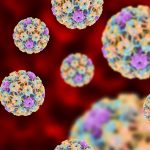Seven Programs in Search of a Strategy: Threats and Opportunities in the Decade Ahead for Naturopathic Medical Education
David Schleich, PhD
Our seven naturopathic medical education programs are almost into the second decade of the 21st century. It is useful to investigate what they face in the higher education realm within whose rules and realities they must operate as they prepare NDs for clinical practice, research, industry leadership, policy assignments and education.
From an institutional perspective, NCNM, CCNM, SCNM and Boucher came into being with naturopathic medicine as the inaugural and core program. NUHS and BU signal what comes next: new ND programs within existing post-secondary institutions whose program mixes, although welcoming a promising new training market, will embrace naturopathic medical education in the context of a multi-program higher education strategy. There are numerous urgent factors influencing that kind of terrain, ranging from learning needs of our students – which have shifted from the early days of NCNM, CCNM and John Bastyr College, when Joe Boucher and Robert Fleming drove miles each weekend to lecture and mentor – to the impact on the role and success of our emerging career medical academics and their curriculum of the so-called “integrative medical movement.”
Student-Centered Education
In the landscape of our naturopathic medical academic professionals, there is yet another impending pressure cooker, perhaps more immediate than the arrival of integrated medicine teachers and practitioners from mainstream higher education and allopathic medicine. The concept of placing students and their learning needs ahead of institutional and faculty preferences needs understanding and sustained attention right now, too. This emerging need has been studied closely in higher education institutions in Canada and the U.S. in recent years. The “school reform movement” in the U.S. and Canada, for example, teaches us that “learning is not isolated from the needs of society” (translate, in our case, from the needs of the profession, the needs of the patient and the location within the political spectrum of the profession’s formation in the larger social economy). Naturopathic medical education, then, is more a “product” whose success is measured not only by the teacher and the institution, but also by the consumer of the product. The consumer in the first instance is the student and, ultimately, the patient. Because of our seven programs being disproportionately reliant on tuition-based funding, our delivery of valued outcomes for our students will get more attention in the coming decade than the priorities of the credentialing monopoly, the institution. The advent of “constituent-based education,” then, is a key factor impacting on the short- and long-term success of our existing programs, and on those new ones that are sure to appear in the second decade of the 21st century.
This student-centered education imperative is happening alongside the rapid transformation of the naturopathic profession organizationally in North America and beyond. The historical regionalism of the profession, which grew out of the small numbers of registrants, is changing forever. What can be characterized as a “new consciousness” comes with an effort to understand the need for an international consensus on practice standards; labor mobility; scope of practice differentiation; federal and state/provincial regulatory issues; variance in professional training and credentials; and the need for strong, national organizations to spearhead the profession’s growth and recognition North America-wide. Related to this transformation is the variety in membership of governing boards of our colleges and programs and in the shift in their mandates. For example, the directors/trustees/governors of regional, comprehensive universities cannot give the same attention to naturopathic medical programs as single-program advisory bodies can. The boards of NCNM, CCNM, SWCNM and Boucher have a different composition and dynamic than the directors or trustees of NUHS, Bastyr and BU can.
In such a terrain, it is vital to attract and retain members of the governing body from all sectors of the country in the interests of developing our college programs’ educational mandate beyond regions and beyond the often overwhelming demands of the institution itself as it strives to exist in its state or provincial contexts. For example, at the same time as CCNM positions itself within the Choice and Excellence Act (2000) in the Province of Ontario to garner a degree credential for its students (a similar circumstance exists in B.C.), NCNM invests time and energy in the Oregon Independent Colleges Association, whose priorities are not about credentials, but more about equitable access to state resources. Further, rushing alongside is a parallel need to keep the profession we serve linked in a formal, systematic way to monitor closely for currency and relevance the learning outcomes of core ND programs. Those programs are no longer evolving just regionally. There are jurisdictions such as New South Wales and Victoria States in Australia, who look at North American standards as colleagues in professional formation where ideas and grounding are critical. This can be accomplished by establishing through the AANMC or the FNM Project a network of already established program/board advisory committee consultations about scope of practice, curriculum content, regulatory transformation, and the growing responsibility of the profession-in-the-field to keep strong links with their schools.
Software Integration
Yet another factor in this complex new world is the impact of increasingly sophisticated and transparent (that is, “user friendly”) software programs that integrate video, graphics, sound, computing, communications, databases, and other technology applications. This brave new world of wireless connectivity, so natural to our students, is already obligating teachers to alter traditional boundaries in the teaching and learning relationship. It also delineates online teaching and learning opportunities for the institution. Our programmatic accreditation standards will be under increasing pressure to assimilate these inevitable learning pathways into accepted benchmarks of quality and measurement. Meanwhile, curriculum, historically defined around faculty specializations of interest (translate: departments), is generating a tension in the higher education community between personal preference (in content, delivery, evaluation approaches) and institutional objectives that must increasingly be aligned with international standards and student learning styles. Our higher education institutions are vertically organized, but our students and patients use our products (education and patient care) horizontally. Higher education researchers predict that the repackaging of student/patient needs to match the capacity and institutionalized preferences of the college’s faculty and staff, and of interested and often local members of the profession, is on a collision course with student demand. McMaster University’s “case-based” approach to curriculum is an example of a response to this factor. Its introduction has been successful because of the valued outcome of a pragmatic focus on learner-driven needs. Time-place bound learning is less likely to endure than far more flexible, yet equally quality-based curriculum methodologies. The customer rules.
Competition in Education
As well, there is the inevitability of competition in our key program areas: CAM and “integrated medicine” curriculum are surfacing steadily in mainstream university and colleges. The “integrated medicine” consortium of universities in the U.S. has now reached 43 members. Their intention is to cherry-pick key modalities for the allopathic medical professional. Dr. Weil’s program in Tucson is a case in point, and while it is altogether inadequate as a training environment for naturopathic medical professionals, the public does not understand what differentiates a so-called holistic medical doctor from a naturopathic doctor. Universities clawing about for new program market niches and research opportunities are happy to diversify their programmatic base. Their medical academics cheerfully bandy about courses and symposia using language and ideas that the naturopathic profession guarded for decades and which, of late, have been detected by the biomedicine world.
Universities are not single-program entities. They rely on differentiated revenue streams to prosper. This economic reality will put unrelenting pressure on our single-program institutions. Our greatest protection will be to safeguard and promote as a distinguishing feature of our education the philosophical and historical framework of our medicine and its curriculum. This framework needs to be nourished by precise attention to teaching those philosophical underpinnings and to keeping fresh in the minds of our students the history of the naturopathic and allopathic medicine, defined by a cultural anthropological perspective rather than a professional territory one. Accompanying these developments will be a grand opportunity for our institutions and programs to become the trainers of choice for other health care professionals in the CAM and “integrated medicine” arenas because, if we take care to do these things, we will be increasingly understood as a unique professional presence in medical education and primary care. In the decade ahead, naturopathic medical education professionals must not miss the chance to influence the complementary/alternative medical training for other health care professionals such as MDs, RNs, DOs, nurse practitioners, homeopathic practitioners, herbalists, chiropractors, Traditional Chinese Medical (TCM) and Classical Chinese Medicine (CCM) practitioners.
Framing these threats and opportunities is evidence that students of higher education institutions are increasingly demanding accountability not only for how the employees of the institution spend their time (e.g., scheduled classes, deadlines for marks, how semesters or quarters are organized in terms of time and place-bound learning requirements) but also for the results of time spent accomplishing the institution’s mission. NPLEX results become as much the responsibility of the teacher and the administrators and other staff who support the teacher, as the student, in such an environment. These same students, metamorphosing in terms of age, cultural background and economic location in society, are bringing to our seven programs greater diversity and, at the same time, higher expectations about what the curriculum will do for them. There is also a concomitant, increased incidence of under-preparedness in language skills, general education and basic sciences among incoming students, thus requiring our programs to monitor and remediate more proactively than before.
Institutional Research
Alongside these learner needs, there simmers a parallel, critical need for institutional research distinct from naturopathic medical research and inclusive of a regular environmental scan capacity, with one-, three-, five- and ten-year windows. This comprehensive, cumulative scan capacity will routinely review the natural health sciences industry (manufacturing, services, research, professional practice, higher education regulation), regulatory issues for the natural health care professions and for the corporations serving them, and data about the success rates of our graduates within those environments. This is not to be confused with academic and clinical research, whose content is informed by naturopathic medical therapies, materials and theories. Key performance indicators, predicated on best practices, will be increasingly central to the mission of institutional researchers, wherever such institutional assessment departments can be created and sustained.
Accompanying such assessment commitment is the urgency of a co-coordinated research mission for the naturopathic profession in North America. Even collectively, CNME-accredited, post-graduate naturopathic medical schools cannot mount and sustain a comprehensive research agenda; the future lies in joint ventures and inter-institutional collaboration (with other multi-program colleges and universities of natural medicine, Canadian and American university faculties of medicine and allied health sciences). The higher education world into which our programs are increasingly thrust will also expect our teachers and researchers to pay attention to the implications here for the credentials of our teachers. For example, an ND degree/diploma will be increasingly complemented by a terminal graduate degree in a related discipline (e.g., PhD, MPH). It is likely that for the naturopathic medical academic, an earned graduate degree with significant research training will become increasingly attractive in addition to the appropriate medical/clinical credential requirement for those teaching in the core programs. In the biomedical sciences curriculum, teachers in the U.S. are already required uniformly to have a completed PhD from an accredited institution with demonstrated evidence of an ongoing research program and publications. As well, all teachers will be committed to developing strong skills in classroom and clinical education delivery and curriculum design. Thus, yet another need: teacher training for natural medicine educators, focusing carefully on the history, philosophy, traditions and mission of naturopathic medicine alongside curriculum design, and measurement and evaluation.
Our seven programs will likely become ten across the next decade. The ten will become 15 in the third decade of the century. Many of us will see this. The future is friendly, but there is much work to do.
 David Schleich, PhD is president and CEO of NCNM, former president of Truestar Health, and former CEO and president of CCNM, where he served from 1996 to 2003. Other previous posts have included appointments as vice president academic of Niagara College, and administrative and teaching positions at St. Lawrence College, Swinburne University (Australia) and the University of Alberta. His academic credentials have been earned from the University of Western Ontario (BA), the University of Alberta (MA), Queen’s University (BEd) and the University of Toronto (PhD).
David Schleich, PhD is president and CEO of NCNM, former president of Truestar Health, and former CEO and president of CCNM, where he served from 1996 to 2003. Other previous posts have included appointments as vice president academic of Niagara College, and administrative and teaching positions at St. Lawrence College, Swinburne University (Australia) and the University of Alberta. His academic credentials have been earned from the University of Western Ontario (BA), the University of Alberta (MA), Queen’s University (BEd) and the University of Toronto (PhD).









